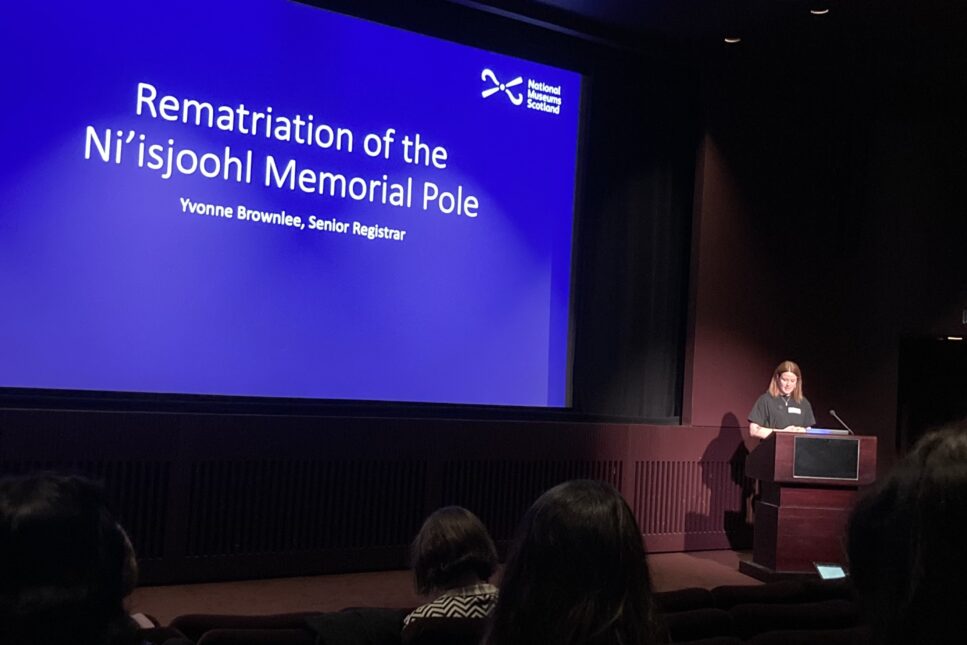
Image: Yvonne Brownlee, Senior Registrar, National Museums Scotland, presenting at the UKRG Winter event
Written by Lucy Findley, Freelance Registrar and Collections Manager, and Casual Registrar, Science Museum Group
I feel very lucky to be asked to write about Yvonne Brownlee’s (Senior Registrar, National Museums Scotland) moving talk about the rematriation of the Ni’isjoohl Memorial Pole. She took us through the entire process from the initial request to the eventual return of the Memorial Pole to its home in Nass Valley, Canada. The Ni’isjoohl totem pole is a memorial pole created and owned by the Nisga’a people of British Columbia, Canada. In 1929, Marius Barbeau purchased the pole from its Nisga’a owners on behalf of the Royal Museum of Scotland, which later became the National Museum of Scotland. It went on display the following year and the pole had been held in the National Museum of Scotland for almost a century. That is until 2022 when it was returned to the Nisga’a Nation.
Having already developed a robust “Procedure for Considering Requests for the Permanent Transfer of Collection Objects to Non-UK Claimants” just prior to the formal request coming through they were well prepared to receive it. However the whole process did flag issues with their procedure in that the request needed to be supported by a recognised Government, whereas the Nisga’a people self-govern. And that the formal request needed to be written, whereas the Nisga’a people are oral only.
They were able to overcome this, and the request was approved by the Board of Trustees of National Museums Scotland and subsequently approved by the Cabinet Secretary for the Constitution, External Affairs and Culture and the rematriation was able to go ahead. Yvonne took us through the provenance of the object, the procedure itself, logistical challenges of removing an 11 metre high pole and the eventual return shipment and ceremony that followed.
It was fascinating the way the object was handled by the Museum up to the transfer of title at Brize Norton (before it was loaded onto a Royal Canadian Air Force plane) compared to when it was handed over to the Nisga’a people. For me this really highlighted the disparity between how we consider objects as part of our museum’s collections versus the actual object itself and the intent with which it was originally created.
Yvonne’s talk was supported by a timelapse video of the pole being deinstalled in the gallery and very moving newsclip about the return.
It was inspiring to see a brand new procedure being used in the real world. As well as an example of the impact, and the contribution, a registrar’s work can have on an entire community. Thank you Yvonne for sharing this with us.

 Instagram
Instagram  LinkedIn
LinkedIn  Twitter
Twitter  My Account
My Account